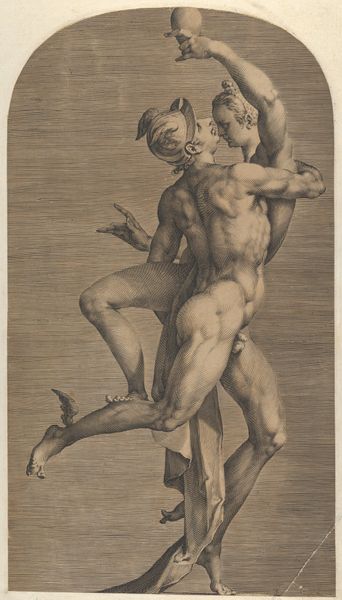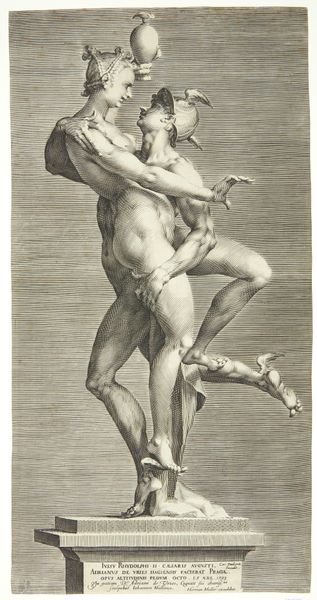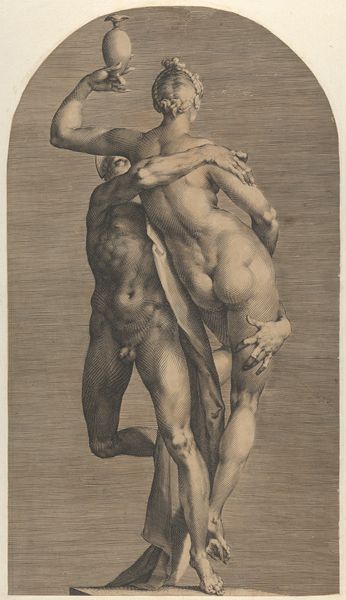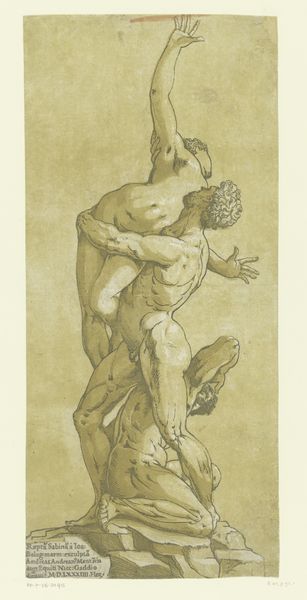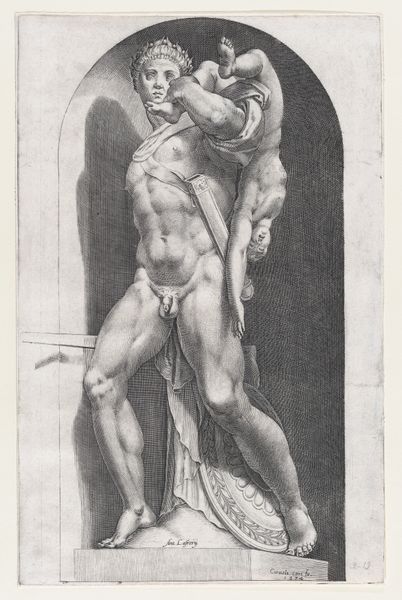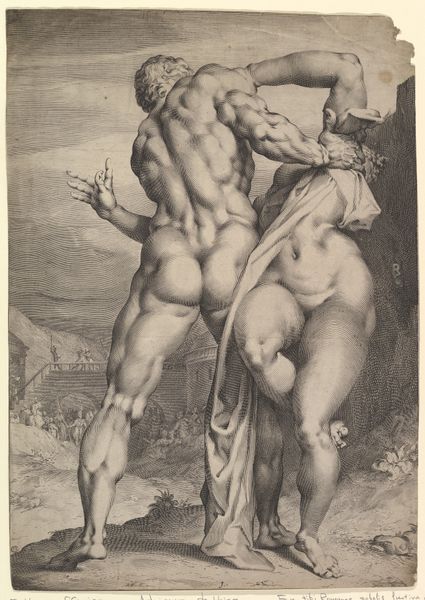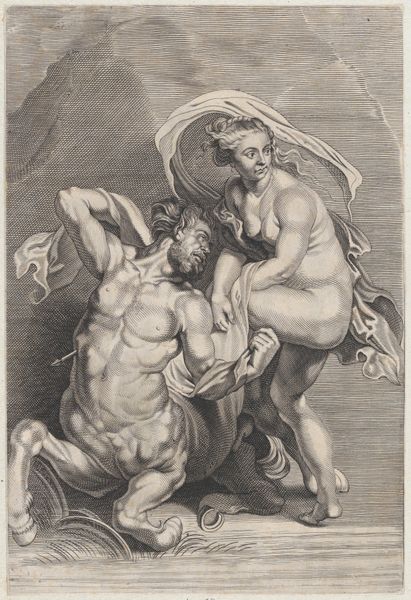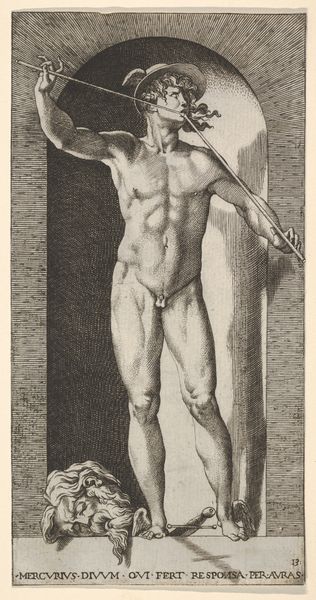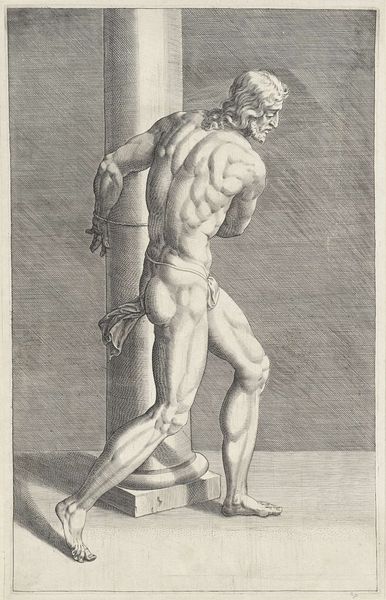
Merkur bortfører Psyche. Merkur set fra siden 1595 - 1598
0:00
0:00
print, engraving
#
allegory
# print
#
figuration
#
italian-renaissance
#
nude
#
engraving
Dimensions: 505 mm (height) x 258 mm (width) (bladmaal)
Editor: Here we have Jan Harmensz. Muller's engraving, "Mercury Abducting Psyche," created between 1595 and 1598. The musculature is really striking. I’m curious—what catches your eye in this print? Curator: I notice the very intense labor that went into this printmaking process. Think about the physical effort involved in carving those fine lines into the metal plate. The Renaissance emphasis on craft here highlights not only technical skill, but also the social and economic context. It was made for a specific audience and reflects patronage networks, right? Editor: Right. It definitely gives a sense of a patron commissioning the work, demonstrating their access to highly skilled labor. Does the choice of subject matter affect that reading for you? Curator: Absolutely. Consider how the classical subject – Mercury abducting Psyche – connects to contemporary markets for luxury goods. Who consumed such prints and how does that consumption contribute to their social standing? Also, observe the attention given to rendering flesh, both in the modeling of light and shade and in its tactile quality. The engraving aimed to capture not just the image but the sensuality of a sculpture in reproducible form. Editor: It is interesting to think about a print trying to replicate a statue’s physical presence. Is it meant as a form of competition, maybe, to show printmaking as an equal artform? Curator: Exactly. It disrupts any assumed hierarchy between "high" art and “craft," suggesting printmaking can transcend mere reproduction. Instead, the value comes from highly skilled artisanship that brings visibility, circulation, and new perspectives to artwork outside of just the wealthy. The act of mechanical reproduction itself generates unique art. Editor: Thinking about it that way, the process gives the image new contexts. Thanks, that was really interesting! Curator: My pleasure! It’s useful to see familiar pieces under a different lens.
Comments
No comments
Be the first to comment and join the conversation on the ultimate creative platform.
